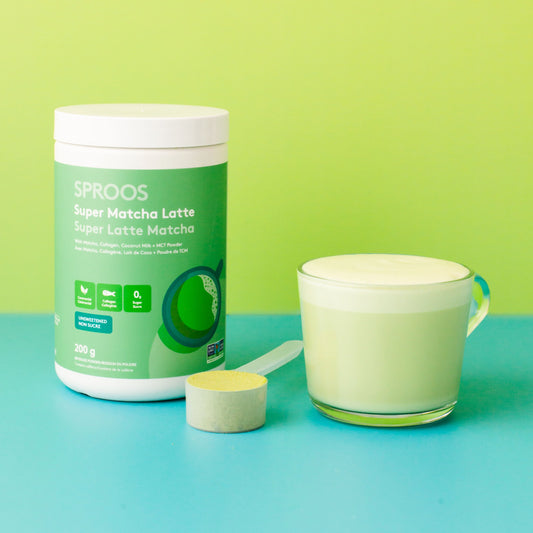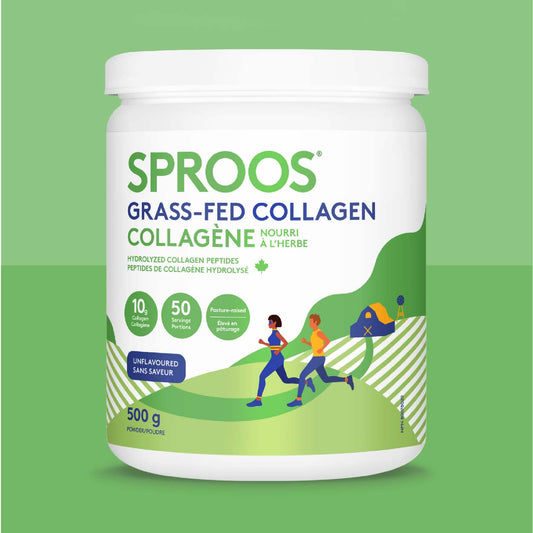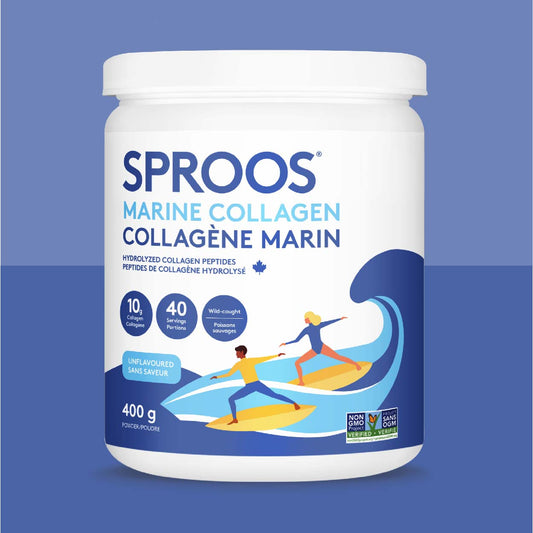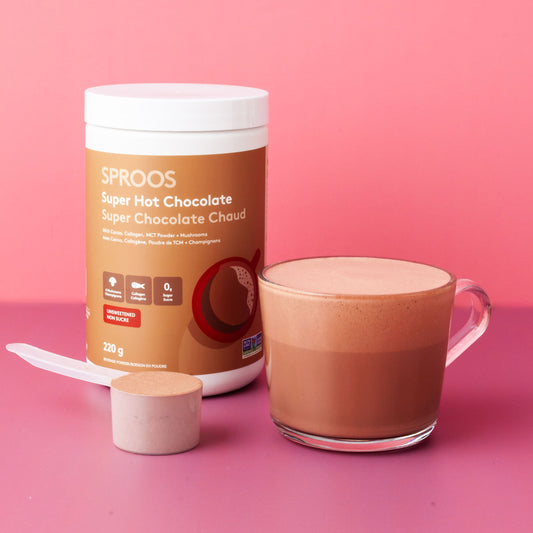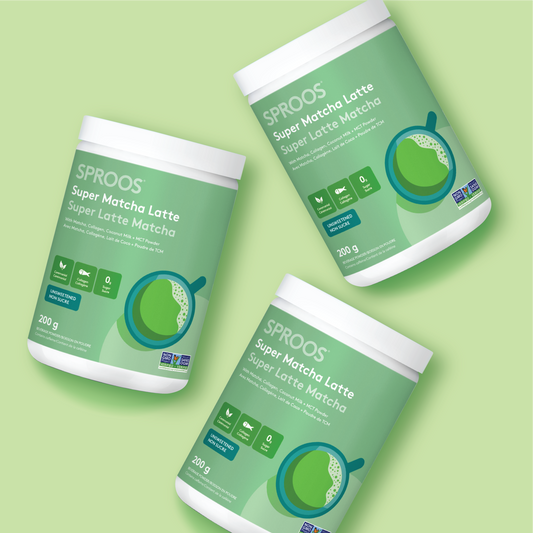Le cycle des graines est une tendance dans le domaine de la santé et du bien-être, mais qu'est-ce que c'est exactement ? L'idée derrière cette pratique est que le fait d'alterner différents types de graines à différents moments peut aider à réguler diverses hormones. Certaines des hormones d'intérêt incluent l'œstrogène et la progestérone – toutes deux des hormones sexuelles et reproductives. L'idée est donc que la régulation de ces hormones par le cycle des graines peut aider à diminuer les symptômes associés au cycle menstruel ou à la ménopause.
LE CYCLE MENSTRUEL
Avant de plonger dans les profondeurs du cycle des graines, il est important de comprendre le cycle menstruel. Il y a beaucoup de jargon scientifique – noms d'hormones, phases du cycle menstruel, etc. – et il est important d'être à jour.
Le cycle menstruel est un processus cyclique (récurrent) de changements hormonaux et physiques qui se produisent chez les personnes ayant un utérus et des ovaires, alors que le corps se prépare à une grossesse potentielle. En moyenne, c'est un cycle de 28 jours commençant le premier jour de ce que la plupart appellent une période.
Gardez à l'esprit que c'est le cycle moyen. Le cycle menstruel varie d'une personne à l'autre.
JOUR 1-5 : LA PHASE DES RÈGLES
- Ce que les gens appellent souvent une période
JOUR 6-14 : LA PHASE FOLLICULAIRE
- Les niveaux de l'hormone œstrogène augmentent
- La muqueuse utérine s'épaissit
JOUR 14 : L'OVULATION
- L'ovaire libère un ovule
JOUR 15-28 : LA PHASE LUTÉALE
- Les niveaux de l'hormone progestérone augmentent
- Si la personne n'est pas enceinte à la fin de cette phase, les niveaux de progestérone chutent, et le cycle recommence
QUELS SONT LES BÉNÉFICES POTENTIELS DU CYCLE DES GRAINES ?
Le cycle des graines est souvent utilisé en médecine naturopathique. Le processus de cycle des graines inclut la consommation des graines suivantes : lin, citrouille, tournesol et sésame. Alterner ces graines peut aider à soulager les symptômes menstruels ou de la ménopause. Les symptômes incluent :
- aider les personnes souffrant de SPM (syndrome prémenstruel) et de SOPK (syndrome des ovaires polykystiques)
- améliorer les règles irrégulières
- réduire les bouffées de chaleur et les sueurs nocturnes
- stimuler la fertilité
- améliorer le bien-être général
Bien que ces bénéfices semblent fantastiques, malheureusement il y a actuellement peu de preuves scientifiques pour étayer ces affirmations. Beaucoup de ces bienfaits pour la santé sont principalement basés sur des preuves anecdotiques. Cela signifie que la plupart des informations entourant le cycle des graines sont basées sur les expériences personnelles des gens ! Ce n'est pas pour discréditer l'expérience de quiconque, mais il est important de garder cela à l'esprit pour la suite de cet article.
Note secondaire : Les hormones sexuelles et reproductives sont très difficiles à étudier. Les niveaux de ces hormones varient beaucoup d'une personne à l'autre. Cela rend difficile la conduite d'études avec des personnes, car un niveau "normal" ou de référence de ces hormones est très différent d'une personne à l'autre. De plus, de nombreux facteurs peuvent influencer les niveaux hormonaux chez une personne ; tout, de l'âge à l'environnement en passant par les facteurs de stress externes. La liste est longue. Donc, même lorsque nous réalisons des études qui examinent les niveaux hormonaux chez les personnes, la plupart du temps nous ne pouvons que tirer des associations.
CALENDRIER DU CYCLE DES GRAINES
Jour 1-13 : Les graines de lin et de citrouille doivent être consommées pour augmenter les niveaux d'œstrogène.
Jour 14-28 : Les graines de sésame et/ou de tournesol doivent être consommées pour augmenter les niveaux de progestérone.
Il ne semble pas y avoir une quantité exacte de graines à consommer, mais une ou deux cuillères à soupe semblent être la suggestion la plus fréquente.
BÉNÉFICES INDIRECTS DES GRAINES
Vous vous souvenez que nous avons dit qu'il y avait peu de preuves scientifiques pour soutenir le cycle des graines ? Eh bien, il y en a, mais il existe des preuves indirectes suggérant des bénéfices. Les graines en général sont souvent riches en nutriments, ce qui signifie qu'elles peuvent apporter des bienfaits pour la santé du corps.
Plus précisément, les graines sont souvent riches en lignanes, et cela vaut pour les graines de lin, de citrouille, de sésame et de tournesol. En fait, les graines de lin sont parmi les sources alimentaires les plus riches en lignanes. Les lignanes sont des polyphénols (et les polyphénols sont des composés végétaux ayant des bienfaits pour la santé), un composé trouvé dans les plantes !
Fait intéressant, les lignanes peuvent se comporter de manière similaire à l'œstrogène ! Pour que l'œstrogène exerce ses effets sur le corps, il doit se lier à un récepteur cellulaire spécifique à l'œstrogène. Les lignanes peuvent aussi se lier aux récepteurs d'œstrogène mais ont des effets beaucoup plus faibles que l'œstrogène. À cause de cela, les lignanes peuvent exercer des effets œstrogéniques ou anti-œstrogéniques. Œstrogénique signifie que les lignanes contribueront à l'activité de l'œstrogène. Anti-œstrogénique signifie que les lignanes bloqueront l'activité de l'œstrogène puisque les deux peuvent se lier aux mêmes récepteurs. Bien que ce soit un sujet complexe qui nécessite encore plus de recherches et de compréhension, c'est intéressant à noter !
Comme mentionné, les graines sont une bonne source de divers nutriments. Cela inclut le zinc et la vitamine E. Le zinc et la vitamine E contribuent tous deux à l'activité antioxydante dans le corps. Les antioxydants sont importants dans l'alimentation car ils aident à éliminer les espèces réactives de l'oxygène (appelées aussi ROS). Les ROS sont des molécules qui s'accumulent dans notre corps et peuvent endommager nos cellules. Des niveaux élevés de ROS dans le corps (ou un état de stress oxydatif élevé ; stress oxydatif = niveaux accrus de ROS) sont liés à une fertilité réduite. Il est donc important d'incorporer dans l'alimentation des aliments ayant une forte activité antioxydante – comme les graines !
EN CONCLUSION
Les graines sont très nutritives et peuvent être un excellent ajout à votre alimentation ! Bien qu'il n'y ait pas encore beaucoup d'études scientifiques pour soutenir cette pratique, beaucoup de personnes ont eu beaucoup de succès. Les graines sont faciles à ajouter à de nombreux repas et peuvent fournir un excellent apport nutritif !
Avez-vous déjà essayé le cycle des graines ? Quelle a été votre expérience ? Assurez-vous de partager avec nous sur les réseaux sociaux !
SOURCES
- Dixon, R. A. (2004). Phytoestrogens. Rev. Plant Biol., 55, 225-261.
- Phipps, W. R., Martini, M. C., Lampe, J. W., Slavin, J. L., & Kurzer, M. S. (1993). Effect of flax seed ingestion on the menstrual cycle. The Journal of Clinical Endocrinology & Metabolism, 77(5), 1215–1219.
- Ruder, E. H., Hartman, T. J., & Goldman, M. B. (2009). Impact of oxidative stress on female fertility. Current Opinion in Obstetrics & Gynecology, 21(3), 219–222.
- The normal menstrual cycle in women. (2011). Animal Reproduction Science, 124(3–4), 229–236.






